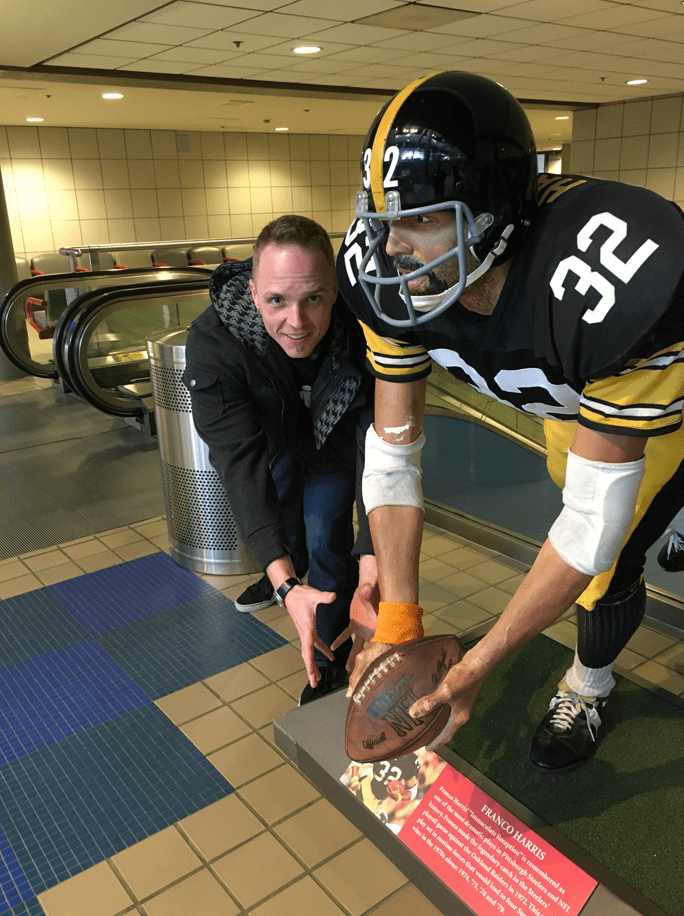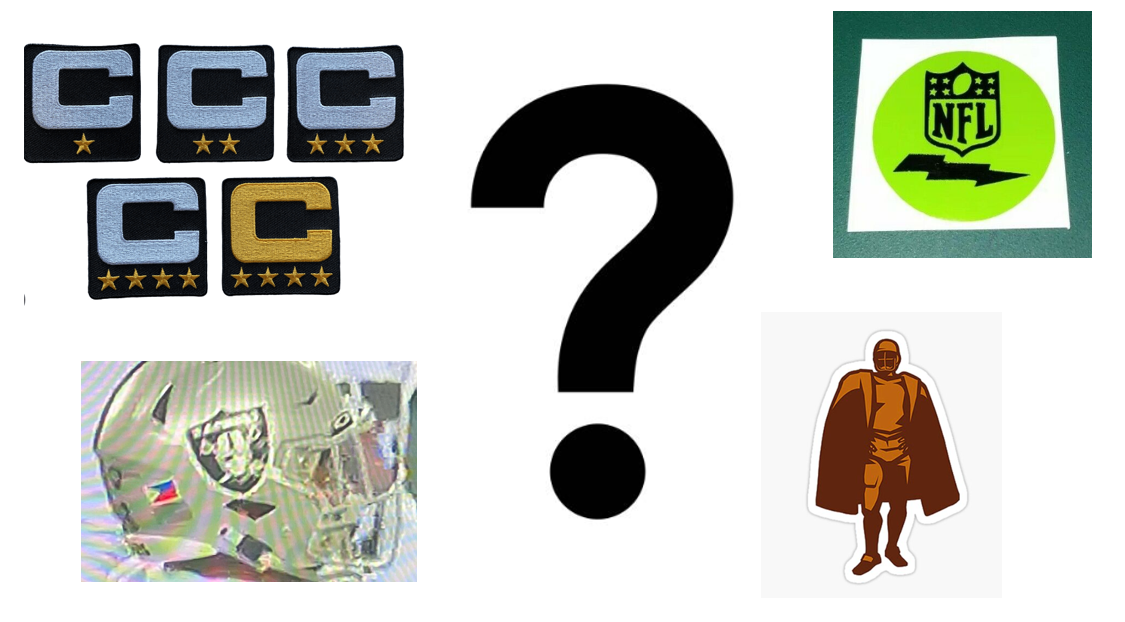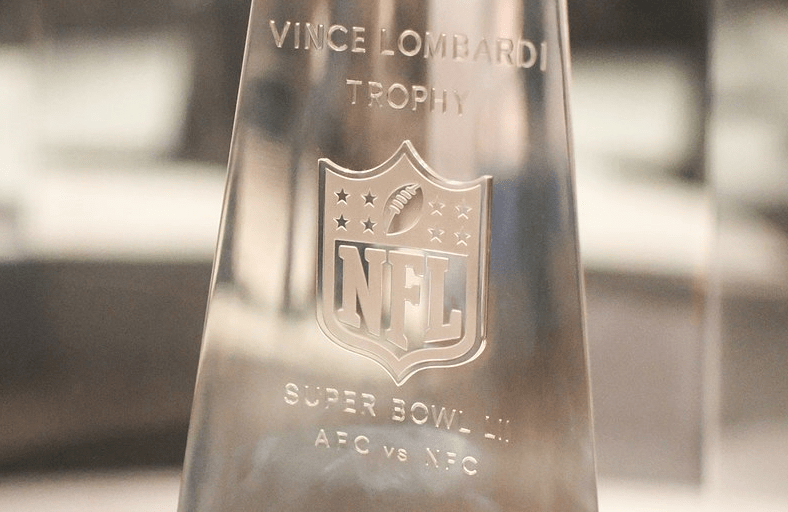
The Immaculate Reception took place 50 years ago on 12/23/72. And it has been captivating NFL fans ever since.
Why is the Immaculate Reception still revered 50 years later?
The same reason people love discussing if bigfoot, aliens, ghosts, or honest lawyers exist.
Because there is just enough evidence that proves they do exist, as there is that proves they don’t.
For as much video footage exists of the play, none of it is conclusive. And in a world where absolutely nothing happens without being videotaped from multiple angles anymore, the intrigue over this play has done nothing but continue to grow year over year as technology advances.
What was at stake prior to the Immaculate Reception in the game that took place in that AFC divisional playoff game on December 23rd 1972 at Three Rivers Stadium?
The 1972 season marked the third year after the AFL-NFL merger, which had the Steelers move to the newly formed American Football Conference despite not having been a member of the American Football League. Thus, this was the third year in which a playoff meeting between the Raiders and the Steelers could take place outside a Super Bowl.
Having missed the playoffs the year before, the two teams met in the opening game of the season (on September 17), which Pittsburgh won, 34–28. In that game, the Steelers took leads of 17–0 and 27–7 on a blocked-punt return touchdown and two rushing touchdowns by Terry Bradshaw. Oakland would fight back with three touchdowns in the fourth quarter, including a 70-yard touchdown pass from “The Mad Bomber” Daryle Lamonica to Mike Siani, but Pittsburgh won
Both teams would end up winning their respective division. Pittsburgh’s 11–3 record put them one game over the Cleveland Browns, who earned the AFC’s wild-card spot, and Oakland’s mark of 10–3–1 ousted the Kansas City Chiefs by 2½ games.
The Steelers hosted the game. Whoever won would face the Miami Dolphins in the AFC Championship the following week.

What happened in the game prior to the Immaculate Reception?
It was a tough, grueling, physical game between the Steelers and Raiders that typified the blood feud between the two franchises in the early 1970s. Every game was as brutal as it was significant.
The Steelers and Raiders hated each other. So much so that in 1976 it led to a criminal courtroom.
A $2 million dispute stemmed from Atkinson’s vicious blow away from the play late in the first half of the 1976 season opener that rendered Pittsburgh wide receiver Lynn Swann ineffective for the second half with a concussion.
Steelers coach Chuck Noll referred to Atkinson as “a criminal element” that should be banished from the NFL. Atkinson pressed charges.

After four hours of further review, this is what the jury decided: No slander. No malice. No damages for Atkinson. NFL commissioner Pete Rozelle fined him $1,500 for being a dirty player. Noll got docked $1,000 for criticizing another team’s player.
But that was four years after the Immaculate Reception. The event itself marking a precipitous boil of coming tensions.
The first half of the Immaculate Reception game was a 0-0 tie. It was a classic blustery, cold, and windy day in Pittsburgh. By the end of the third quarter the Steelers had mustered a 6-0 lead thanks to two field goals.
With 1:17 left in the game, Raiders’ QB Ken Stabler scored on one of the slowest 30-yard TD QB scrambles you will ever see.
What was the Immaculate Reception?
Trailing the Oakland Raiders 7–6, the Pittsburgh Steelers faced fourth-and-10 on their own 40-yard line with 22 seconds remaining in the game and no time-outs.
Steelers quarterback Terry Bradshaw, under heavy pressure, threw the ball to the Raiders’ 35-yard line, where it was intended for running back John Fuqua. At the exact moment the ball arrived, Raider’s safety Jack Tatum made contact with Fuqua and knocked him to the ground. The ball was sent flying backwards, end over end, headed towards the frozen turf field.

Steelers running back Franco Harris was blocking on the play, but gradually moved downfield as a received, once Bradshaw had to move out of the pocket.
Just as the ball hit the ground, Harris screamed in from nowhere and scooped it up, in stride. Harris ran past two Raiders defenders and used a stiff arm to ward off a Raiders defensive back and scored a TD.
The Immaculate Reception GIF:

From Wikipedia:
“The critical question: whom did the football touch in the Fuqua/Tatum collision? If it bounced off Fuqua without ever touching Tatum, then Harris’s reception was illegal. If the ball bounced off only Tatum, or if it bounced off both Fuqua and Tatum (in any order), then the reception was legal.
The rule stated in pertinent part that if an offensive player touches a pass first, he is the only offensive player eligible to catch the pass. “However, if a [defensive] player touches [the] pass first, or simultaneously with or subsequent to its having been touched by only one [offensive] player, then all [offensive] players become and remain eligible” to catch the pass.”
So, what actually happened? Was the Immaculate Reception a legal play?
Depending on who you ask, you will get two completely different answers.
Raiders defender Tatum said that the ball did not bounce off him, both immediately after the game as well as in his memoirs. Steelers’ Fuqua has made a cottage industry of his involvement of the play, giving talks and public appearances where he remains coy but says he knows “exactly what happened” and will never tell.
Then-Raiders coach John Madden summed it up best: “No matter how many times I watch the films of the ‘immaculate reception’ play, I never know for sure what happened.”
Other than reading through the history of the event and various first person accounts, how can you get a direct answer? By going directly to the two players involved – Terry Bradshaw and Franco Harris.
When I asked Bradshaw about how the Immaculate Reception affected his life, he said it didn’t, flatly.
“The ‘Immaculate Reception’ did nothing to help me; we won a game and got beat the following week. It’s voted a great play every year, but not much. It wouldn’t change anything that happened.”
“I threw the ball as hard as I could from our 30-yard line, to their 35, where it makes contact and flies into the air. Franco is standing around their 45. I didn’t throw the ball hard enough for it to bounce that far back off Fuqua, and since Fuqua was running across the field, the ball would have veered to the right if it had hit him. That ball must have bounced off Tatum – if that had happened then Tatum’s momentum carries the ball backward.”

After my interaction with Terry, I was hoping Franco reflected upon the play more positively. Probably because I had for all these years. And Bradshaw’s sentiment on the play was akin to finding out Santa Claus wasn’t real.
But Franco was upbeat and positive about what the play meant to him.
“That was the springboard to the success we had for the rest of that decade. Before that year, 1972, the Steelers were a laughing stock. I honestly did not want to play for them – and I went to Penn State so I should’ve!”
“Before that year, the Steelers had 8 straight losing seasons. And even before that they weren’t any good. We win the Immaculate Reception game, but we finally beat the Raiders. Sure, we lost to the Dolphins the next week who ended up winning the Super Bowl that year, but in the next 7 years we make the playoffs every year and win four Super Bowls. I think it definitely contributed and who knows how different everything would be if it didn’t happen.”
“But one things for sure – I definitely caught that ball.”

The Immaculate Reception is 50 years old.
Like any great mystery or unknown, the thing that keeps it subsisting is the lack of a conclusive answer. And the same holds true for the Immaculate Reception.
Whether it is supposedly conclusive footage of the play recorded by Pittsburgh’s Channel 4 that was lost due to “inadequate filing procedures.”
Or that all of the main video recordings from that day from multiple angles all fail to show the full, completed play, the mystery of the Immaculate Reception will live forever.
Unless your name is Terry or Franco.










